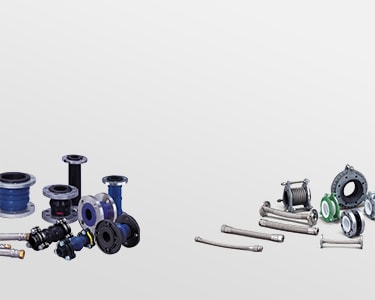
Technical data
Other related equipment
(MOOHA water-hammer prevention device – related material)
OTHER
MOOHA water-hammer prevention device
Installation location
As a rule of thumb, please install the MOOHA as close as possible to the source of water hammer.
Measures against water hammer from lifting pumps

Measures against water hammer from rapidly closing control valves

| Number | Name |
|---|---|
| ① | Elevated tank |
| ② | Gate valve |
| ③ | MOOHA |
| ④ | Check valve |
| ⑤ | Piping length |
| ⑥ | Flexible joint (e.g. Toughlex HS) |
| ⑦ | Lifting pump |
| ⑧ | Flexible joint(ex.ELBOFLEX) |
Outline attachment is also possible

※In the case of a hot water system, offline attachment should be chosen to allow for retained water to protect the elastic tubes,
and the attachment location should be lower than the piping to avoid electric heat from convection.
| Number | Name |
|---|---|
| ① | Blind flange |
| ② | MOOHA |
| ③ | Gate valve |
| ④ | Check valve |
| ⑤ | Flexible joint (ex PT CONNECTOR) |
| ⑥ | Pump |
| ⑦ | Flexible joint (ex ELBOFLEX) |
Sizing
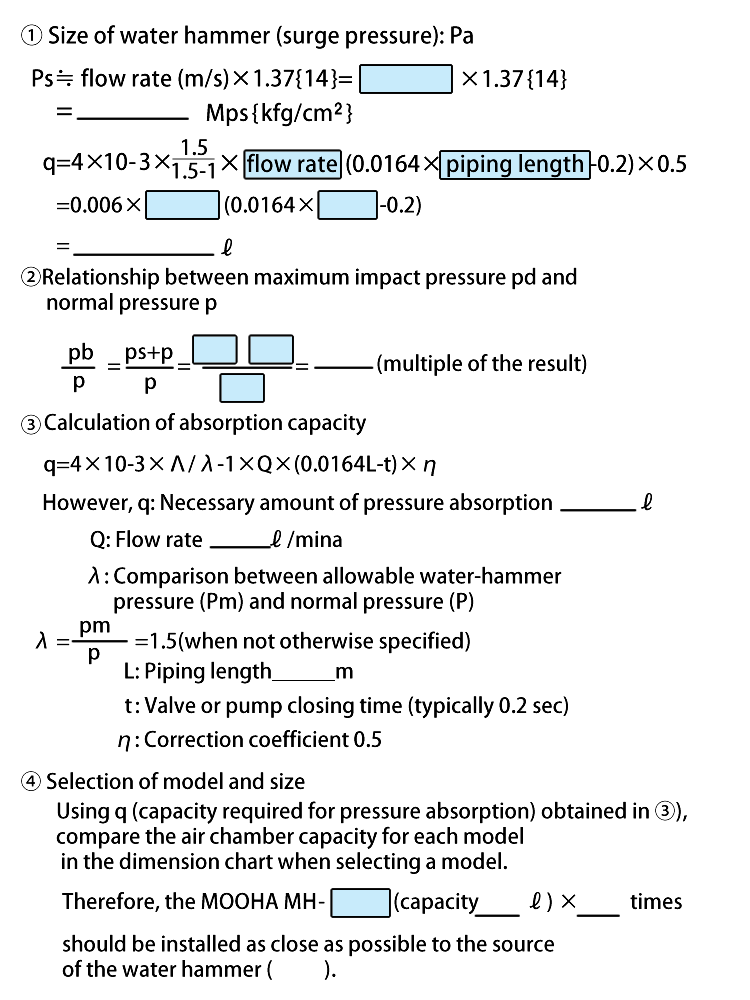
- ※* When making an order, please let us know piping diameters, piping lengths, flow rates, normal pressure, water hammer sources, etc.
We will provide a calculation sheet to select a model for you. We will also be pleased to discuss how to install a MOOHA etc.
Please see the reference material for a flow rate diagram.
Reference
Definition of water hammer
Water hammer occurs when the flow of liquid is stopped instantly with a tap, valve, etc. creating a sudden increase in pressure in the upstream portion of the piping above the closure point, and the resultant pressure waves run through the piping system at constant speed. This phenomenon is called water hammer. Extract from “Plumbing System Technical Standards/Explanations (1996)” – created under the editorship of the Building Guidance Division, Housing Bureau, Ministry of Construction
Negative effects of water hammer
When water hammer occurs, it can vibrate piping or equipment, or make noise, causing damage to piping and water leakage. It can also cause resonance with the architectural structure that supports the piping, or damage machinery and equipment connected to the piping, which can significantly shorten their service life etc.
Extract from “Plumbing System Technical Standards/Explanations (1996)” – created under the editorship of the Building Guidance Division, Housing Bureau, Ministry of Construction
Attaching water hammer prevention devices
No. 2
The structural characteristics of drinking water piping facilities must be according to No. 1 and also comply with the following.
ーWater supply pipes
・Where there is a possibility of water hammer occurring, measures need to be taken to effectively prevent water hammer such as installing an air chamber.
1975 Ministry of Construction Notification No. 1597
Amended 1982 Ministry of Construction Notification No. 1674, amended 1987 Ministry of Construction Notification No. 1924
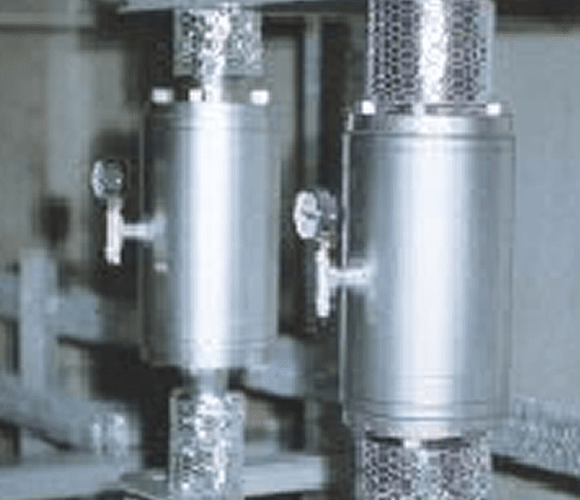
Connected to vertical piping around lifting pumps
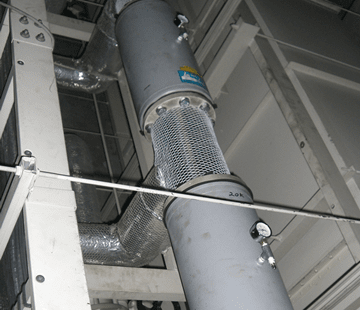
Connected to vertical piping
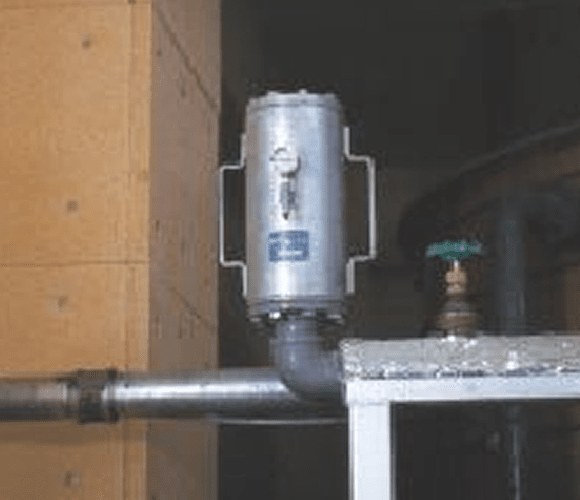
Example of outline installation
(May also be used in external installation with a one-side blind flange.)
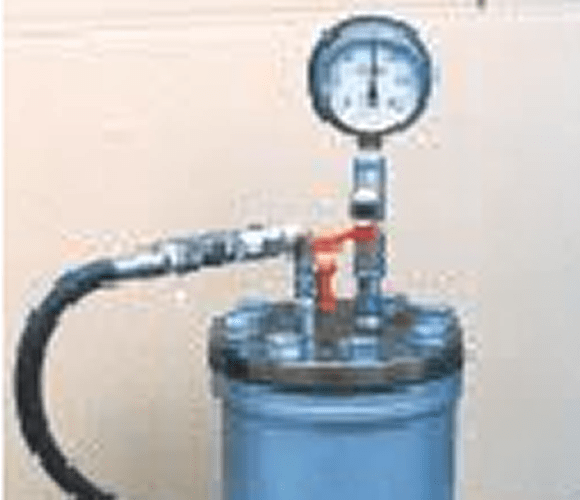
Pressure resistance/durability testing
